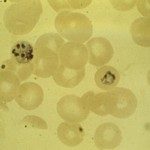Link to Pubmed [PMID] – 22134342
Link to HAL – hal-01544154
Link to DOI – 10.1097/COH.0b013e32834dde01
Current Opinion in HIV and AIDS, 2012, 7 (1), pp.71-78. ⟨10.1097/COH.0b013e32834dde01⟩
Purpose of review A key factor driving AIDS-associated immunopathogenesis is chronic immune activation. Simian immunodeficiency virus (SIV) infection of African natural host species leads to high viremia, but low immune activation and absence of disease. Considerable progress in our understanding of pathological immune activation has come from comparative studies of SIV infection in pathogenic Asian macaque species and natural hosts. The focus of this review is to highlight recent work on the natural host model using high-throughput genomics. Recent findings Several groups have independently conducted microarray gene expression profiling comparing in-vivo SIV infection in natural and non-natural hosts. A consistent finding between these studies is that both pathogenic SIV infection of macaques and nonpathogenic infections of natural hosts have strong induction of interferon-stimulated genes (ISGs) early on, but a key difference was that natural hosts down-modulated the interferon response rapidly after acute infection. The development of new genome-based resources for further study of the natural host model is discussed. Summary Initial efforts using high-throughput biology to study SIV infection of natural hosts have effectively identified the ability of natural hosts to resolve interferon responses and immune activation. Further application of `omic-based technologies coupled with integrative systems-based analysis should continue to yield progress.



